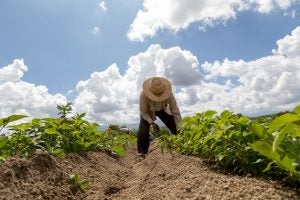What’s it like to grow organic produce in Mexico? It isn’t something we normally talk much about. But if you purchase organic produce here in the United States, it’s a question you should be asking. That’s because food grown in Mexico often finds its way to the grocery stores in the U.S. And a lot of it proudly displays the USDA’s organic label.
As I revealed in my previous AGDAILY article, imported produce can use the USDA organic label. Generally it’s allowed when the importing country has an organic certification that’s equivalent to the USDA’s program. The details of how and when is usually contained in trade agreements. And it varies from country to country. For example, the European Union has an equivalent program to the U.S. So organic imports from the E.U. can all use the USDA’s label.
But Mexico has a special relationship with the States. As our southern neighbor, it’s geographic proximity and year-round warm weather make it an ideal trading partner. In 2016, the U.S. bought $23 billion in agricultural products from Mexico. The most popular items — accounting for 75 percent of those imports — include vegetables, fruit, wine, beer, and snack food.
Unfortunately, organic imports aren’t tracked as closely. But we know that the U.S. imported at least $278 million worth of organic products in 2017. The actual amount is probably much higher though, considering that only select organic products are counted.

So how do we know these things are actually organic? Mexican-grown food often comes with a stigma that it’s a free-for-all system with no regulations. It’s likely an unfair assumption (unfortunately, I’ve never visited a farm in Mexico). But it’s understandable that people might be skeptical of organic produce imported from the country.
It turns out the USDA has a lot of agents living in Mexico for this very purpose. The USDA currently has about two dozen USDA-accredited certifiers operating in Mexico (time for a career change?). And there are more than 1,600 USDA-certified organic operations in the country. So just like U.S. farmers seeking organic certification, Mexican farmers must follow the same rules and regulations.
Mexico implemented its own Organic Products Law and regulations in April 2017. So all organic products sold in the country now have to be certified by Mexican officials, or certified under an equivalent standard in another country. That’s important for U.S. farmers, who export $133 million worth of organic products. And, as I explained before, it’s also a step closer to how most organic trade agreements work.
But USDA and Mexico’s National Service for Animal and Plant Health, Food Safety and Quality (SENASICA) are still evaluating whether the organic standard in the other country is sufficiently equivalent. So Mexican farmers are still required to go through USDA certification to export their products. It will be interesting to see if this changes in the coming years. It’s possible that organic produce grown according to the Mexican organic standard could eventually be shipped to the U.S. with the USDA organic label.
Admittedly, I was surprised to learn that USDA certifiers operate in Mexico. That’s not usually the perception people have about food from Mexico. But it makes sense. Mexico is a big trading partner, especially when most of our country is too cold to grow crops in the winter. We rely on our southern neighbor for imported food to supplement what we grow. It’s nice to know that it’s done properly. I’ll be interested to see whether Mexico’s own certification takes off in the future.
So it might be somewhat shocking that food grown in Mexico can be USDA organic certified. But Mexican farmers are actually certified by USDA agents operating within our southern neighbor. And those farmers are subject to the same regulations and restrictions as U.S. organic farmers.
Amanda Zaluckyj blogs under the name The Farmer’s Daughter USA. Her goal is to promote farmers and tackle the misinformation swirling around the U.S. food industry.



